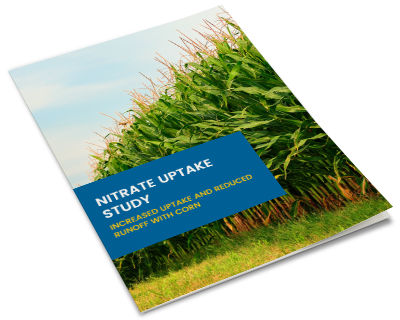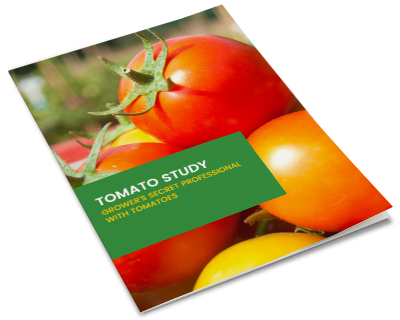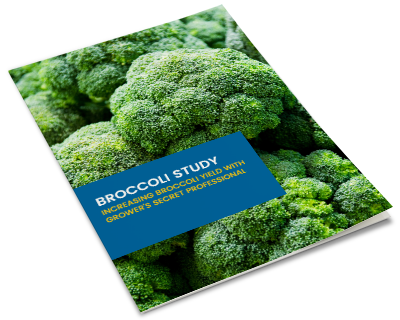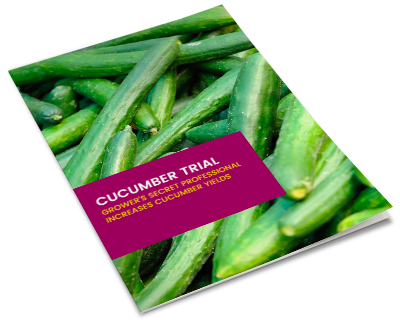|
Posted By: Wesley Chun, Ph.D. / |
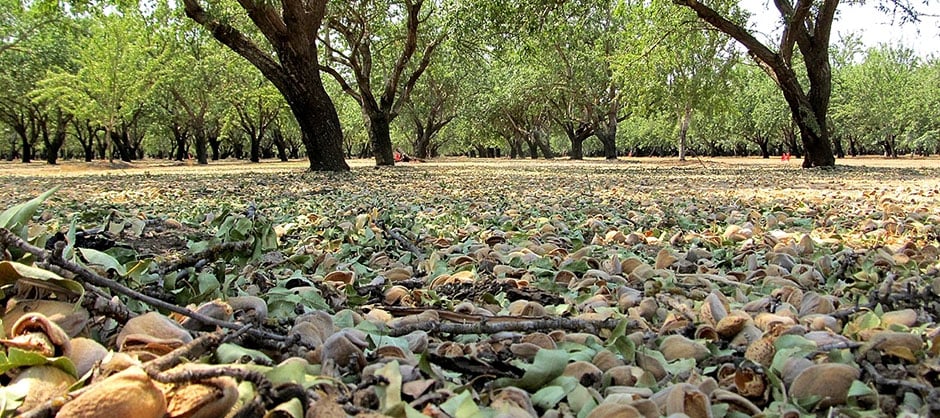
By Dr. Wes Chun Ph.D.
Grower's Secret, Chief Science Officer
For many crops, post-harvest (the period after harvest and before leaf senescence) fertilization can play an important role in the following season crop. In many tree crops, it is one of the best times of the season for uptake of nitrogen and potassium. Trees are still active, and the roots and foliage readily absorb applied nutrients. These nutrients become reserves for the following growing season. While there may be little difference in tree productivity between fall and spring fertilizer applications, it may be better to fertilize in the fall. Fall applications are more efficient since trees are still actively taking up nutrients, cold and wet conditions in the spring can delay dormancy break, and spring-applied fertilizers are subject to leaching and runoff.After harvest, trees and vines are recovering from stress, so post-harvest fertilization programs accomplish several things. They can replace nutrients removed by the harvest and provides an opportunity to address nutrient deficiency issues before the next growing season. Fall applied fertilizers do not impact tree vigor so what is applied is taken up and goes into tree reserves. One key to success for early varieties and for situations where spring is late points to this technique.
Requirements for macro- and micronutrients varies depending on the crop. Your crop advisor can assist with determining your crop needs based on leaf analysis and harvest removal data. Some nutrients to consider and their function are listed here.
- Boron is important for flowering and fruit set. It also helps develop healthy floral parts, pollen tubules, calcium translocation.
- Zinc is needed for flowering and fruit set. Aids ability to synthesize auxins for cell division for uniform budburst, fruit set, retention, and sizing.
- Magnesium is required for photosynthesis as it is an important component of chlorophyll.
- Calcium contributes to fruit firmness and cell wall structure. It is an important component of pectin.
- Nitrogen increases yield and fruit size. After budburst, vegetative growth is driven by stored nitrogen in the form of amino acids.
- Phosphorus is needed fall root flush development and for next year’s dormancy break.
- Potassium has a growth regulator effect for water uptake, nutrient uptake and assimilation, and cell reproduction.
The table below lists target levels of NPK and a few critical micronutrients for several tree crops. It is not a complete list of plant nutrient requirements, and you are encouraged to seek additional information from your crop advisor, extension agent, or other informational sources. Nutrient test levels are grouped as “Low,” “Sufficient,” or “Excess.” Fertilization is usually required for crops when the value is “Low.” Limit fertilization when the value is “Sufficient.” When nutrient values are “Excess,” fertilization may not be necessary.
| Crop | Analysis | Nutrient | Low1 | Sufficient | Excess |
|
Almond |
Leaf (July) |
N |
<2 |
2.2 – 2.5 |
>2.7 |
|
|
|
P |
|
0.1 – 0.3 |
|
|
|
|
K |
<1 |
>1.4 |
|
|
|
Hull |
B (ppm) |
<80 |
80 - 150 |
>200 |
|
Avocado2 |
Leaf (late summer early fall) |
N |
<1.8 |
2.0 – 2.2
|
>2.8 |
|
|
|
P |
0.05 – 0.09 |
0.1 – 0.25 |
>0.3 |
|
|
|
K |
0.35 – 0.75 |
0.75 – 2.0 |
>3 |
|
|
|
Zn (ppm) |
<20 |
30 – 150 |
>300 |
|
Citrus |
Leaf (during fruit development |
N |
2.2 – 2.3 |
2.4 – 2.6 |
>2.8 |
|
|
|
P |
0.09 – 0.11 |
0.12 – 0.16 |
0.17 – 0.29 |
|
|
|
K |
0.40 – 0.69 |
0.70 – 1.09 |
1.10 – 2.00 |
|
Grapes |
Petiole analysis (at full bloom) |
N (ppm) |
<350 |
500 – 1200 |
>2000 |
|
|
|
P |
<0.1 |
0.1 – 0.15 |
>1.5 |
|
|
|
K |
<1.0 |
1.0 – 1.5 |
>1.5 |
|
Olives |
Leaf (Fruit development) |
N |
<1.4 |
1.5 – 2.0 |
>2.0 |
|
|
|
P |
<0.1 |
0.2 – 0.3 |
|
|
|
|
K |
<0.4 |
>0.8 |
|
|
|
|
B (ppm) |
14 |
19 – 150 |
>185 |
|
Peaches/ Nectarines |
Leaf |
N Fresh/ Processing |
<2.3 |
2.4 – 3.0 |
>3.0 |
|
|
|
P |
< 0.10 |
0.10 – 0.3 |
|
|
|
|
K |
<1.0 |
>1.2 |
|
|
|
|
Zn (ppm) |
<15 |
|
|
|
Pistachio |
Leaf (summer) |
N |
< 1.8 |
2.2 – 2.5 |
|
|
|
|
P |
< 0.14 |
0.14 - 0.17 |
|
|
|
|
K |
1.6 |
1.8 – 2.0 |
|
|
Prunes/ Plums |
Leaf |
N |
<2.2 |
2.3 – 2.8 |
>2.8 – 3.0 |
|
|
|
P |
<0.1 |
0.1 – 0.3 |
|
|
|
|
K |
<1.0 |
1.3 – 2.0 |
>2.0 |
|
|
|
Zn (ppm) |
<18 |
|
|
|
Walnut |
Leaf |
N |
<2.1 |
2.2 – 3.2 |
|
|
|
|
P |
|
0.2 – 0.3 |
|
|
|
|
K |
<0.9 |
>1.2 |
|
2 Values are for Hass Avocado. Hass avocados have relatively high leaf N concentrations, and other varieties may have other optimum ranges.
Almonds – post-harvest fertilization supports the development of next year’s blossoms, growth of the earliest spring leaves and development of immature fruits. Nitrogen can be applied any time after hull split to a few weeks after harvest. The amount needed depends on leaf tissue N from a July sampling. If sufficient N is present, up to 20% of the N budget can be used not sure what this means. Less N or no N may be needed post-harvest for higher leaf N levels. K can be applied as well although needs may be minimal since the almond hull is the primary sink for potassium. P should only be considered if deficiency symptoms are observed. Fall is a great time for B if hull levels are deficient. Adequate B is needed for nut set and yield in the following year.
Avocado – since avocados are fertilized several times during the year to match nutrient needs at different growth stages, post-harvest fertilization of nitrogen, phosphorus, and potassium may not be needed. Nitrogen is important for growth and development. Potassium is needed for growth and fruit development. Boron and zinc are important for growth and fruit development, respectively. Fertilizers can be applied at any time of the year to support developmental growth needs. There are some things to note. When leaf concentrations of phosphorus exceed 0.14%, it may have already interfered with zinc uptake in some varieties. Avocado root rot caused by Phytophthora cinnamomi kills root hairs resulting in Zn deficiency symptoms. Hence, Zn fertilization as a corrective measure will not be effective. It is unclear whether sufficient zinc to meet needs can be absorbed via leaves. As always, it is better to address the primary cause of zinc deficiency. Additional Zn is not needed when levels are excessive.
Citrus fertilization programs are generally completed before harvest. The amount of nitrogen differs between varieties and additional nitrogen after mid-august should be avoided to minimize new late flushes. Please note that sufficient nitrogen values may be different for mandarin, grapefruit, and vigorous cultivars.
Grape is a crop where post-harvest fertilization is important. The time required to restore carbohydrate and mineral reserve varies from very little to up to 8 weeks depending on crop load. July or late September applications may result in the highest concentration of N in dormant storage tissue. This storage material fuels the following season’s early growth until roots become active.
Olives are not big feeders, so fertilization is less important than water and good weed control unless deficiency symptoms are observed. Phosphorus and potassium deficiencies are less common in olives. However, nitrogen deficiencies can appear. Nitrogen is best applied regularly to maintain adequate shoot growth of 8 to 20 inches.
Peaches and other stone fruits should receive sufficient nitrogen to obtain an annual growth rate up to 18 inches. The minimum growth target varies with different fruit. Anywhere from 20-50% of the nitrogen budget for the crop can be applied in the fall before leaf senescence. Fall applications of Zinc can also be applied, but growers should be aware that toxicity can result in a zinc excess.
Pistachio requires phosphorus and potassium that can help trees tolerate infection by Verticillium dahliae. Some authorities recommend a late winter early spring application of NPK while others recommend fertilizer applications in Augus Foliar nitrogen can be used in the fall to supplement and correct deficiency symptoms.
Prunes/Plums, foliar nitrogen can be used to address a nitrogen deficiency, or when conditions for soil nitrogen uptake is low. Granular potassium is usually applied in fall. Zinc is usually applied in the fall at the beginning of leaf drop. Note that earlier zinc applications may accelerate leaf drop. Also, be aware of zinc toxicity levels.
Walnuts, common practice are two to three applications of fertilizer during the year with the last application concluding in August.
This article was designed to provide a general examination of post-harvest fertilization of a few tree crops. Some crops such as almonds and grapes can benefit from post-harvest fertilization to replace nutrients removed from harvest, and to prepare crops for the following growing season. Other crops may not need fall fertilization. Fertilizer needs will vary between crop and crop variety, soil type, the environment and whether there is an “on” or “off” season. You are encouraged to seek assistance from your local crop advisor or consultant.


